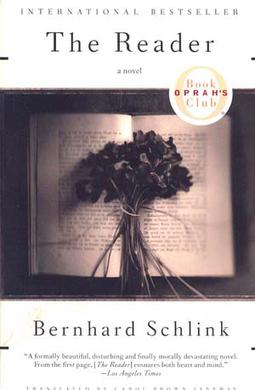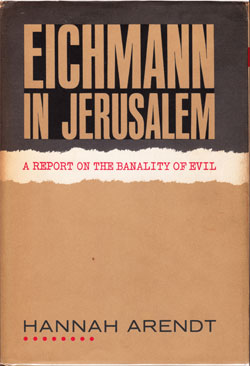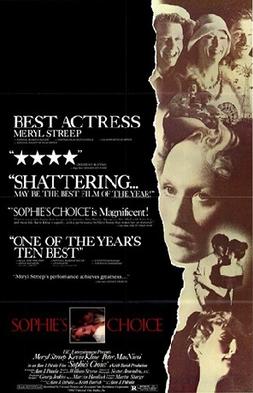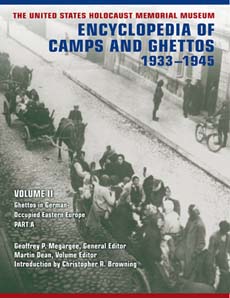
Nazi Germany used six extermination camps, also called death camps, or killing centers, in Central Europe during World War II to systematically murder over 2.7 million people – mostly Jews – in the Holocaust. The victims of death camps were primarily murdered by gassing, either in permanent installations constructed for this specific purpose, or by means of gas vans. The six extermination camps were Chełmno, Belzec, Sobibor, Treblinka, Majdanek and Auschwitz-Birkenau. Extermination through labour was also used at the Auschwitz and Majdanek death camps. Millions were also murdered in concentration camps, in the Aktion T4, or directly on site.

William Clark Styron Jr. was an American novelist and essayist who won major literary awards for his work.

Jean Améry, born Hanns Chaim Mayer, was an Austrian-born essayist whose work was often informed by his experiences during World War II. His most celebrated work, At the Mind's Limits: Contemplations by a Survivor on Auschwitz and Its Realities (1966), suggests that torture was "the essence" of the Third Reich. Other notable works included On Aging (1968) and On Suicide: A Discourse on Voluntary Death (1976). He adopted the pseudonym Jean Améry after 1945. Améry died by suicide in 1978.

The Destruction of the European Jews is a 1961 book by historian Raul Hilberg. Hilberg revised his work in 1985, and it appeared in a new three-volume edition. It is largely held to be the first comprehensive historical study of the Holocaust. According to Holocaust historian, Michael R. Marrus, until the book appeared, little information about the genocide of the Jews by Nazi Germany had "reached the wider public" in both the West and the East, and even in pertinent scholarly studies it was "scarcely mentioned or only mentioned in passing as one more atrocity in a particularly cruel war".
This is a selected bibliography and other resources for The Holocaust, including prominent primary sources, historical studies, notable survivor accounts and autobiographies, as well as other documentation and further hypotheses.

Chaim Mordechaj Rumkowski was the head of the Jewish Council of Elders in the Łódź Ghetto appointed by Nazi Germany during the German occupation of Poland.
David Ian Cesarani was a Jewish historian who specialised in Jewish history, especially the Holocaust. He also wrote several biographies, including Arthur Koestler: The Homeless Mind (1998).

The Reader is a novel by German law professor and judge Bernhard Schlink, published in Germany in 1995 and in the United States in 1997. The story is a parable, dealing with the difficulties post-war German generations have had comprehending the Holocaust; Ruth Franklin writes that it was aimed specifically at the generation Bertolt Brecht called the Nachgeborenen, those who came after. Like other novels in the genre of Vergangenheitsbewältigung, the struggle to come to terms with the past, The Reader explores how the post-war generations should approach the generation that took part in, or witnessed, the atrocities. These are the questions at the heart of Holocaust literature in the late 20th and early 21st century, as the victims and witnesses die and living memory fades.
The Holocaust has been a prominent subject of art and literature throughout the second half of the twentieth century. There is a wide range of ways–including dance, film, literature, music, and television–in which the Holocaust has been represented in the arts and popular culture.

Eichmann in Jerusalem: A Report on the Banality of Evil is a 1963 book by the philosopher and political thinker Hannah Arendt. Arendt, a Jew who fled Germany during Adolf Hitler's rise to power, reported on the trial of Adolf Eichmann, one of the major organizers of the Holocaust, for The New Yorker. A revised and enlarged edition was published in 1964.

Alma Maria Rosé was an Austrian violinist of Jewish descent. Her uncle was the composer Gustav Mahler. She was deported by the Nazis to the concentration camp at Auschwitz-Birkenau. There, for 10 months, she directed an orchestra of female prisoners who played for their captors to stay alive. As director, Rosé held the status of kapo of the music block.

Sophie's Choice is a 1982 psychological drama directed and written by Alan J. Pakula, adapted from William Styron's 1979 novel of the same name. The film stars Meryl Streep as Zofia "Sophie" Zawistowska, a Polish immigrant to America with a dark secret from her past who shares a boarding house in Brooklyn with her tempestuous lover Nathan, and young writer Stingo. It also features Rita Karin, Stephen D. Newman and Josh Mostel in supporting roles.

The Deputy, a Christian tragedy, also published in English as The Representative , is a controversial 1963 play by Rolf Hochhuth which portrayed Pope Pius XII as having failed to take action or speak out against the Holocaust. It has been translated into more than twenty languages. The play's implicit censure of a venerable if controversial pope has led to numerous counterattacks, of which one of the latest is the 2007 allegation that Hochhuth was the dupe of a KGB disinformation campaign, later confirmed by both the Venona Project and Mitrokhin Files in declassification of the Soviet disinformation campaign Operation Seat 12. The Encyclopædia Britannica assesses the play as "a drama that presented a critical, unhistorical picture of Pius XII" and Hochhuth's depiction of the pope having been indifferent to the Nazi genocide as "lacking credible substantiation.". However, it has since been discovered that Pope Pius XII seems to have known about concentration camps.

The Boy in the Striped Pyjamas is a 2006 historical fiction novel by Irish novelist John Boyne. The plot concerns a German boy named Bruno whose father is the commandant of Auschwitz and Bruno's friendship with a Jewish detainee named Shmuel.

Otto Adolf Eichmann was a German-Austrian official of the Nazi Party, an officer of the Schutzstaffel (SS), and one of the major organisers of the Holocaust. He participated in the January 1942 Wannsee Conference, at which the implementation of the genocidal Final Solution to the Jewish Question was planned. Following this, he was tasked by SS-Obergruppenführer Reinhard Heydrich with facilitating and managing the logistics involved in the mass deportation of millions of Jews to Nazi ghettos and Nazi extermination camps across German-occupied Europe. He was captured and detained by the Allies in 1945, but escaped and eventually settled in Argentina. In May 1960, he was tracked down and apprehended by Israel's Mossad intelligence agency, and put on trial before the Supreme Court of Israel. The highly publicised Eichmann trial resulted in his conviction in Jerusalem, following which he was executed by hanging in 1962.
Gavriel David Rosenfeld is President of the Center for Jewish History in New York City and Professor of History at Fairfield University. His areas of academic specialization include the history of Nazi Germany, memory studies, and counterfactual history. He is an editor of The Journal of Holocaust Research and edits the blog, The Counterfactual History Review, which features news, analysis, and commentary from the world of counterfactual and alternate history.

Yehiel De-Nur, also known by his pen name Ka-Tsetnik 135633, born Yehiel Feiner, was a Jewish writer and Holocaust survivor, whose books were inspired by his time as a prisoner in the Auschwitz concentration camp.
Sophie's Choice is an opera by the British composer Nicholas Maw, with a libretto by the composer based on the novel of the same name by the American novelist William Styron. It was premiered on 7 December 2002 at the Royal Opera House, London.
Pamela Katz is an American screenwriter and novelist best known for her collaborations with director Margarethe von Trotta, including Rosenstrasse and Hannah Arendt.

Encyclopedia of Camps and Ghettos, 1933–1945 is a seven-part encyclopedia series that explores the history of the concentration camps, ghettos, forced-labor camps, and other sites of detention, persecution, or state-sponsored murder run by Nazi Germany and other Axis powers in Europe and Africa. The series is produced by the United States Holocaust Memorial Museum (USHMM) and published by Indiana University Press. Research began in 2000; the first volume was published in 2009; and the final volume is slated for publication in 2025. Along with entries on individual sites, the encyclopedias also contain scholarly overviews for historical context.














